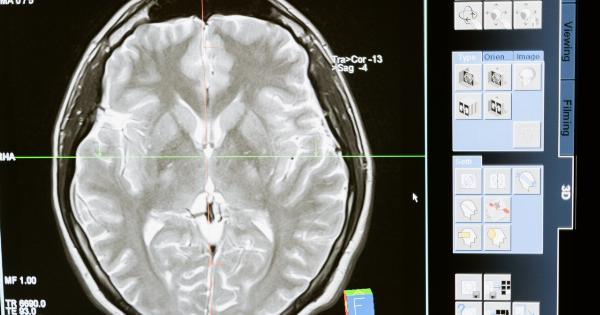As individuals progress through the different stages of their lives, their bodies undergo various changes and face new challenges. When it comes to health, it is common knowledge that age can bring about certain conditions and ailments.
However, there are also lesser-known health risks that could affect people in their 60s. In this article, we will explore some of these lesser-known health risks and provide insights on how to mitigate them.
1. Sarcopenia
Sarcopenia refers to the age-related loss of muscle mass and strength. As individuals enter their 60s, they may notice a decline in muscle mass, which can lead to weakness and frailty.
It is important to maintain a regular exercise routine that includes both aerobic and resistance training to combat sarcopenia.
2. Osteoporosis
Osteoporosis is a condition that weakens the bones, making them more prone to fractures. Women, in particular, are at a higher risk of developing osteoporosis after menopause.
Adequate calcium and vitamin D intake, along with weight-bearing exercises, can help prevent or slow down the progression of osteoporosis.
3. Age-Related Macular Degeneration (AMD)
Age-related macular degeneration is a common eye condition that affects older adults and can lead to blindness. It causes a loss of central vision, making it difficult to read, drive, and recognize faces.
Regular eye exams and a healthy lifestyle can help reduce the risk of developing AMD.
4. Sleep Apnea
Sleep apnea is a sleep disorder characterized by pauses in breathing or shallow breaths during sleep. It can lead to disrupted sleep, fatigue, and an increased risk of cardiovascular problems.
Maintaining a healthy weight, avoiding alcohol and sedatives, and using a continuous positive airway pressure (CPAP) machine can help manage sleep apnea.
5. Type 2 Diabetes
Type 2 diabetes is a chronic condition that affects how the body metabolizes glucose. The risk of developing type 2 diabetes increases with age, and it can lead to various complications if left uncontrolled.
Adopting a balanced diet, engaging in regular physical activity, and maintaining a healthy weight are key factors in preventing type 2 diabetes.
6. Depression and Anxiety
Mental health issues such as depression and anxiety can arise or worsen in older age. Some older individuals face significant life changes, such as retirement or the loss of loved ones, which can contribute to these conditions.
Seeking support from loved ones, engaging in social activities, and talking to a mental health professional are essential in managing depression and anxiety.
7. Cognitive Decline
Age-related cognitive decline, including conditions like mild cognitive impairment (MCI) and dementia, can affect memory, thinking, and decision-making abilities.
Engaging in mentally stimulating activities, maintaining a healthy lifestyle, and staying socially active may help reduce the risk of cognitive decline.
8. Incontinence
Incontinence, both urinary and fecal, becomes more prevalent with age. This condition can significantly impact an individual’s quality of life and may lead to social isolation.
Maintaining pelvic floor muscle strength through exercises, avoiding bladder irritants, and following a regular toileting schedule can help manage and prevent incontinence.
9. Falls and Fractures
Falls are a leading cause of injuries in older adults and can result in fractures, head traumas, and other serious consequences.
Regular exercise to improve balance and strength, removing tripping hazards at home, and wearing appropriate footwear can minimize the risk of falls and fractures.
10. Cardiovascular Diseases
Cardiovascular diseases, including heart disease and stroke, remain leading causes of death among individuals in their 60s and beyond.
Adopting a heart-healthy diet, engaging in regular physical activity, managing stress, and maintaining a healthy weight are essential in preventing and managing cardiovascular diseases.
Conclusion
As individuals enter their 60s, they should be aware of the potential health risks that may arise.
By understanding these lesser-known risks and taking proactive measures, such as maintaining a healthy lifestyle and seeking appropriate healthcare, individuals can minimize the impact of these health conditions on their lives.





























